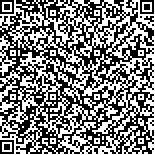|
|
| |
|
|
| 本文已被:浏览 285次 下载 420次 |

码上扫一扫! |
|
|
| 浙江近海横带髭鲷(Hapalogenys mucronatus)表型性状与体重的通径分析及曲线拟合 |
|
平洪领1,2, 张涛1,2, 史会来1,2, 付铁中2, 林慧2, 杨淑越2
|
|
1.浙江省海洋水产研究所 浙江省海水增养殖重点实验室 浙江舟山 316021;2.浙江海洋大学海洋与渔业研究所 浙江舟山 316021
|
|
| 摘要: |
| 横带髭鲷(Hapalogenys mucronatus)是我国优质近海岛礁性鱼类, 具有较高的经济、营养和观赏价值, 有着良好的发展前景。为研究横带髭鲷野生群体的表型性状对体重的影响效果, 测定了全长(X1)、体长(X2)、头长(X3)、躯干长(X4)、尾部长(X5)、眼径(X6)、体高(X7)、尾柄高(X8)、体宽(X9)、眼间距(X10)10个表型性状及体重(Y), 利用相关分析、通径分析、回归分析等方法探究了表型性状对体重的影响, 并建立多元回归方程, 分别以列入回归方程的4个表型性状为自变量, 体重为因变量进行曲线模型拟合, 筛选出最优拟合模型。结果表明, 体重的变异系数最大, 而表型性状则相对较小。横带髭鲷各性状之间均呈现极显著正相关关系(P<0.01), 全长与体长的相关系数(0.967)最大, 体高与体重的相关系数(0.958)次之。通径分析发现体高对体重的直接作用最大(0.433), 依次为全长(0.286)、眼间距(0.179)、体宽(0.110)。从间接作用角度分析, 体宽的间接作用最大(0.803), 体高的间接作用最小(0.526)。体高对体重的直接决定系数最大(0.187), 全长和体高的共同决定系数最大(0.228)。得出了表型性状与体重的多元回归方程, 以及全长(X1)、体高(X7)、体宽(X9)和眼间距(X10)与体重的最佳拟合模型方程。综上所述, 在开展横带髭鲷选育工作时, 应以全长(X1)和体高(X7)为主要选择表型性状, 以体宽(X9)和眼间距(X10)为辅助性状。研究结果可更精准地指导横带髭鲷选育工作需要测量的表型性状。 |
| 关键词: 横带髭鲷(Hapalogenys mucronatus) 表型性状 体重 通径分析 曲线拟合 |
| DOI:10.11693/hyhz20221200329 |
| 分类号:Q174; Q955; S965 |
| 基金项目:浙江省“三农九方”科技协作计划项目, 2022SNJF073号; 舟山市科技计划项目, 2022C31056号, 2021C31012号; 浙江省科技厅院所专项, HYS-CZ-202208号, HYS-CZ-202317号; 浙江省海洋水产研究所科技计划项目, HYS-ZY-202105号; 国家重点研发计划“蓝色粮仓科技创新”重点专项, 2020YFD0900804号。 |
|
| PATH ANALYSIS AND CURVE FITTING OF PHENOTYPIC TRAITS AND BODY WEIGHT OF HAPALOGENYS MUCRONATUS IN ZHEJIANG OFFSHORE |
|
PING Hong-Ling1,2, ZHANG Tao1,2, SHI Hui-Lai1,2, FU Tie-Zhong2, LIN Hui2, YANG Shu-Yue2
|
|
1.Zhejiang Province Key Laboratory of Mariculture and Enhancement, Zhejiang Marine Fisheries Research Institute, Zhoushan 316021, China;2.Zhejiang Ocean University, Zhejiang Marine Fisheries Research Institute, Zhoushan 316021, China
|
| Abstract: |
| To understand the effect of phenotypic traits on body weight of wild population of Hapalogenys mucronatus, 10 phenotypic traits including total length (X1), body length (X2), head length (X3), trunk length (X4), tail length (X5), eye diameter (X6), body height (X7), caudal peduncle height (X8), body width (X9), interorbital space (X10) and body weight (Y) were measured. Correlation analysis, path analysis, and regression analysis were conducted, from which multiple regression equations were established. Four phenotypic traits that included in the regression equation were used as independent variables, and body weight was used as the dependent variable to fit the curve model, and the optimal fitting model was selected. Results show that the coefficient of variation of body weight was the largest, while those of phenotypic traits were relatively small. The correlation between each trait pair of H. mucronatus was significantly positive (P<0.01). The correlation coefficient between total length and body length (0.967) was the largest, followed by that between body height and body weight (0.958). Path analysis showed that body height had the greatest direct effect on body weight (0.433), followed by total length (0.286), interorbital space (0.179), and body width (0.110). From the perspective of indirect effect, the indirect effect of body width was the largest (0.803), and the indirect effect of body height was the smallest (0.526). The direct determination coefficient of body height to body weight was the largest (0.187), and the common determination coefficient of total length and body height was the largest (0.228). The multiple regression equation of phenotypic traits and body weight was established. The best fitting model equations of total length (X1), body height (X7), body width (X9), and interorbital space (X10) with body weight were established, respectively. Therefore, in a breeding work of H. mucronatus, the full length (X1) and body height (X7) should be the main selection phenotypic traits, and the body width (X9) and interorbital space (X10) should be the auxiliary traits. This study can more accurately guide the phenotypic traits that need to be measured in the breeding of moustache. |
| Key words: Hapalogenys mucronatus phenotypic traits body weight path analysis curve fitting |
|
|
|
|
|
|
